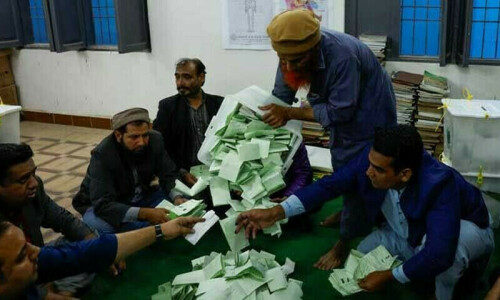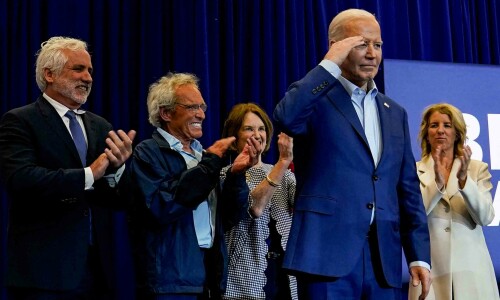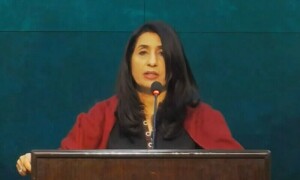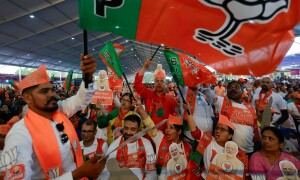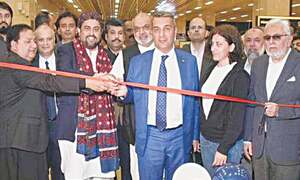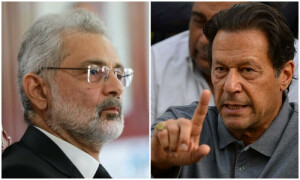Nowhere else is the gender gap more pronounced in Pakistan than in the income tax rolls where more than 99 per cent tax payers are listed as males.
With almost 50 per cent of the population, women account for less than 1 per cent of all income tax payers in Pakistan. The reason for women’s absence from income tax rolls perhaps lies in the manner women are integrated in the workforce. Women’s labour force participation rate in Pakistan is rather dismal at around 14.4 per cent. Bangladesh, on the other hand, reports a three-times higher rate than Pakistan for women’s participation in the labour force. Furthermore, women in Pakistan are often employed in low paying jobs or jobs that do not compensate monetarily. However, the above arguments fail to explain why fewer than 1 per cent income tax payers are women.
It is not that Pakistan lacks affluent women. There are several empowered, influential, and wealthy women in Pakistan such as Begum Abida Hussein (who represents the landed gentry), Sharmila Farooqi (who represents the new breed of female political mavericks), and Dr. Maleeha Lodhi (who represents the intellectual elite). Could it be true that this very visible minority of enfranchised women obscure the fact that despite their prominence they belong to a very small cohort which accounts for fewer than 1 per cent of the taxpayers in Pakistan. Or it is true that women are reluctant to file income tax in Pakistan.
While much has been written about tax evasion there are however few examples, if any, of research on those who in fact do file taxes in Pakistan. A recent paper by Professor Henrik Jacobsen Kleven and Mazhar Waseem of the London School of Economics is an exception in which the authors explore the behavioural motivations of tax payers in Pakistan.*
Relying on a database of those who filed the federal income tax during 2006-08 the authors explore the motivations of tax payers as they try to minimise their income tax charges. The data comes from the Federal Bureau of Revenue and comprises the entire population of personal income tax filings by individuals or their employers.
Despite being a nation of 180 million, on average merely one million individual income taxes are filed annually in Pakistan. The registered tax payers in Pakistan represent just 2 per cent of the working age population. This explains why the income taxes account for only 1.1 per cent of Pakistan’s economy. With such poor revenue generation from domestic sources, the government has perhaps no other option but to borrow from international donors to keep the wheel of life churning in Pakistan.
Pakistan’s tax code categorises income earners as wage earners, i.e., those who work for an employer, and self-employed individuals. For wage earners, it is possible to obtain third-party verification of earned income from the employers to prevent under-reporting of income. On the other hand, there is no possibility of independent income verification of self-employed individuals and thus short of an audit self-reported revenue is treated as final.
The lack of third party verification and the very structure of the tax system makes it vulnerable to exploitation. The tax rate in Pakistan is devised such that it increases with income. Thus a self-employed individual earning more than 200,000 rupees is charged a 5 per cent tax rate whereas another person earning more than 300,000 rupees is charged a 7.5 per cent tax rate.
Since the incomes of self-employed individuals, who constitute 50 per cent of all income tax payers, cannot be verified independently they may be tempted to underreport incomes to avoid higher taxes. Thus, one would expect a sudden increase in the number of tax payers for tax brackets before the tax rate increases. Keleven and Waseem in there analysis reveal how tax payers in Pakistan have systematically underreported their incomes, which leads to a sudden jump in the number of tax payers in certain tax brackets.
The following figure illustrates the systematic underreporting of income in Pakistan. Since the tax rate increases by 2.5 per cent at an annual income of greater than 300,000 rupees, there is a sudden hike in the number of tax payers who stated their income to be 300,000 rupees or slightly less. This phenomenon is repeated for every income tax bracket where the tax rate increases resulting in significant loss in tax revenue to the government.

Another quirk in the tax system is the differential tax rate structure for wage earners and self-employed workers where the former are subjected to significantly lower tax rates. Thus for the same level of income wage earners are taxed at a lower rate than the self-employed workers. Furthermore, the tax system treats the individual either as a wage earner or self-employed such that if one reports 50 per cent or more income from self-employed sources, one is considered a self-employed worker and is taxed at a higher rate. The differential treatment leads to further leakage in the tax revenue where individuals try to shift self-employed earnings to wages to claim lower income tax rates.
In Pakistan, where a large number of workers are illiterate or innumerate, many find the current income tax structure complex because of several income brackets and unintuitive tax exemptions. Wage earners are divided into 20 income brackets and self-employed workers are spread over 14 income brackets. At the lowest income level women are exempted for a larger amount than men. The tax system further exempts various key sources of income, such as capital gains, pension, and agriculture-based income. Moreover, wage earners earning less than 500,000 rupees are exempted from filing taxes.
There is an urgent need to streamline the tax code in Pakistan to address the systematic underreporting of incomes. At the same time, Pakistan has to find ways to involve more women in the labour force. Bangladesh and India have done much better in integrating women into the labour force. Pakistan should learn from Bangladesh in empowering its women. If women are continued to be forced to the sideline, there is little hope of an economic miracle in Pakistan. Remember, Pakistan needs women workers to raise productivity and income tax revenue.
*Kleven, Henry Jacobsen and Mazhar Waseem. (May 2011). Tax notches in Pakistan: Tax evasion, real responses, and income shifting.
 Murtaza Haider, Ph.D. is the Associate Dean of research and graduate programs at the Ted Rogers School of Management at Ryerson University in Toronto. He can be reached by email at murtaza.haider@ryerson.ca
Murtaza Haider, Ph.D. is the Associate Dean of research and graduate programs at the Ted Rogers School of Management at Ryerson University in Toronto. He can be reached by email at murtaza.haider@ryerson.ca
The views expressed by this blogger and in the following reader comments do not necessarily reflect the views and policies of the Dawn Media Group.


















